Problem: Flashing Failures.
Cause: Inadequate size and improper installation of flashings.
Roof flashings are pieces of sheet metal used to prevent water or wind-driven rain through joints between materials. They are installed at wall and roof intersections , in roof valleys and around roof penetrations.
Most of the problems occur when the flashings are too small or are not installed with adequate lap and in the right locations relative to other materials.
Solutions: Flashings must have minimum sizes and must be installed properly to seal the joints between materials as shown in Figures 8a, 8b, 8c and 8d.
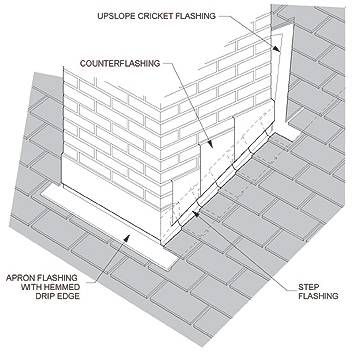
Figure 8a - Common Metal Roof Flashings
Couterflashing on chimneys and other brick veneer walls is one of the most common items that is not installed. The primary reason is that the counterflashing needs to be installed over the step flashing which cannot be installed until the roof decking and the initial rows of brick work have been installed. Two different trades, competing for completion schedules.
Couterflashing should be used on with apron, step and cricket flashing to divert water away from the top edges of those flashings. Wall cladding materials, in some cases, will act as counterflashing, however, when this is not the case, counterflashing must be mounted properly and in the correct positions.
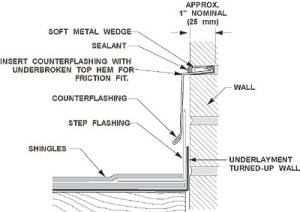
Figure 8b - Masonry Mortar Joint With Inset Metal Counterflashing
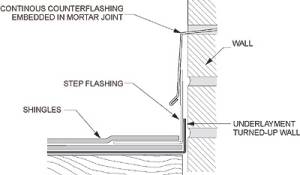
Figure 8b - Masonry Mortar Joint With Through-wall Metal Counterflashing
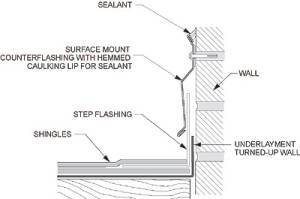
Figure 8c - Surface Mounted Metal Counterflashing
- Attach a base flashing to the roof at the intersection of the walls and the roof, and bend it 90 degrees up the wall. If you use a stepped flashing, you must apply a head lap of 3 inches (75 mm) along the slope.
- Counterflashing must extend 6 inches (150 mm) up the side of the wall. When the wall finish is masonry, embed the counterflashing at least 1 inch (25 mm) into the mortar joint and lap it order the base flashing by at least 4 inches (100 mm).
- For other wall finishes, counterflashing is not generally used, so the sheathing paper and finish material should lap over the base flashing. For wood siding, leave a 2 inches (50 mm) gap between the siding and the roof to prevent water suction into the wood.
- Open valleys can be flashed with sheet metal at least 24 inches (600 mm) wide or with two layers of roll roofing. If you use roll roofing, center one layer of Type S or Type M in the valley with the mineral surface down; it should be not less than 18 inches (460 mm) wide. Provide a second layer of Type M with the mineral surface up; it should measure not less than 36 inches (915 mm) wide. Do not walk on the roll roofing valley, as the fabric may shrink, making it easy to puncture. Some geographic areas may permit the use of felt in the valley rather than sheet metal or roll roofing.
- Trim the roof coverings in a straight line on both sides of the valley. The distance between the finish and the center of the valley should be not less than 2 inches (50 mm).
- Roof vents, plumbing vents and metal chimneys generally come with a preformed flashing. Follow the manufacturer's installation instructions to ensure water tightness.
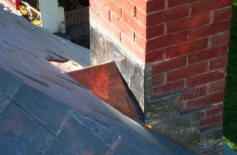
Figure 9 - Chimney cricket or saddle
- Where the upper side of a chimney on a sloping roof is more than 30 inches wide, protect the intersection between the roof and the chimney with sheet-metal flashing that extends up the chimney to a height equal to and not less than one sixth the width of the chimney and not less than 6 inches (150 mm). It must extend up the roof slope to a point equal in height to the flashing on the chimney, but not less than one and a half times the shingle exposure. If you do not do this, you must install a chimney saddle, as shown in Figure 9.
- Cover the chimney saddles with sheet metal or roofing material of weight and quality equivalent to the roofing and suitably flash them where they intersect with the roof. Flash and counterflash the intersection of the chimney and the saddle.
Additional information on roofs and roofing
